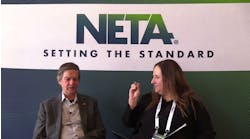Whether you service the consumer/residential, commercial, or industrial markets, you always are going to run into those customers you wish you’d never met.
Here are some situations to better define this statement:
- A consumer pays by credit card, and you think everything’s fine until your card processor sends you a chargeback notice. For example, the customer calls you out on a Saturday and agrees to your weekend service charge. The job is to get the air conditioner running again. Your tech sees the coils are iced up, thaws them with a torch, and tells the customer not to turn the thermostat all the way down in the future. The customer balks at the $120 charge for this 15-minute job and tells the credit card company he was ripped off.
- An industrial customer changes payment terms unilaterally. For example, a customer places a big order, on the understanding they’ll pay you for the equipment (e.g., four 60-ton air conditioners) upon delivery. But when the items are delivered, they tell you they can’t pay until the job is complete and payment will be on 90-day terms.
- Callbacks (yes, we hate these!). For example, a commercial customer complains that the lights you finished installing yesterday don’t seem bright enough, so you send an electrician out to look. Why didn’t the installation crew’s supervisor make sure the customer was happy before the crew left?
- Rather than tell you about a perceived (or maybe even real) problem, the customer goes onto one of those review sites and vents his frustration about you. The accusations don’t have any basis in reality; it’s just an angry customer.
Something from an unrelated field helps shed light on these problems. In medical malpractice suits, the quality of the care itself — that is, how expertly the doctor and staff perform — is usually a secondary factor. What triggers a typical suit is how the patient (or family) felt they were treated.
A doctor who takes 10 minutes to just listen to the patient may avoid spending hours in court. If the same doctor takes a few more minutes to properly explain what’s going on, things get even better. In case after case in which a doctor has erred technically, the family that felt respected typically doesn’t bring suit.
Now, think about how this applies to your business.
- That tech who de-iced the air conditioner? How did he explain the problem? Did the customer feel talked down to, or did the tech extend respect as if anyone could make such a mistake? Did the tech emphasize about the financial bite that was coming, or just leave the customer to stew about that?
- Why would an industrial customer change payment terms? Maybe they feared the contractor would be slow to complete the work without “some skin in the game.” If this contractor had specified in writing what was due when, and used language like “to avoid a mechanic’s lien,” and then asked the plant controller to go over this line by line, would this situation have happened? What if the contractor had specified performance penalties for itself to reassure the customer? What if the contractor held a meeting to ask, “What are your concerns?”
- Every callback is a sign that you don’t have proper quality assurance and sign-off. Walk the customer through every quality checkpoint and have the customer initial each one and then sign off that the work is complete and satisfactory. Make it a mutually satisfactory quality assurance process.
- To prevent negative reviews, use all of the steps above.
But there’s more. First, don’t leave the job without documenting the work with (at a minimum) “as left” electrical test measurements and photographs. That nice, neat wiring job your crew did could be messed up by a maintenance tech who then blames your firm, resulting in a payment dispute.
Second, have you noticed on Amazon that there’s a seller rating for every seller (except new ones)? If you’ve bought much on Amazon, you’ve probably received a request to provide such a rating.
In electrical work, you would of course use an approach different from Amazon's. But you’d still seek that feedback. Don’t send out a form asking the customer to rate you on a scale that includes four positives and one negative. Depending upon the complexity of the job, you might want someone to make a follow-up phone call or you might ask for feedback at each milestone or perhaps even daily. Show the customer you care, and show it with a frequency commensurate to the size and duration of the job.
Consider using one of the contract photo card mailing services. Photograph the completed work, then create some cards in your account, and set the system to mail them out automatically at the interval you specify. Look for a provider that uses good quality paper, as it will make a good impression on the recipient.
The first card could be a follow-up on the job you just did (Please let us know of any problems). The second could be a follow-up for related services (We are offering training on that system). The third could be a plug for more work (Would you like more high-quality work like what we did for you in this photo?).
What other ways can you think of to show each customer that you care? Develop a plan that works for you, and those problems we mentioned will rarely, if ever, occur again.





